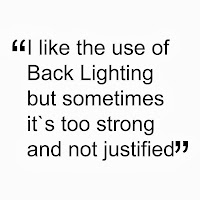Kon-Tiki is a co-direction between Joachim Ronning and Espen Sandberg who already directed together theirs previous features (Max Manus, Bandidas). It is the Norwegian film with the highest budget ever produced and it is the official submission of Norway to the best Foreign language Film of the Oscar 2013.
The plot. It's a true story about explorer Thor Heyerdal who, in 1947, decided to cross the Pacific Ocean from Lima to Polynesia in a balsa wood raft to prove that Polynesia was first settled by south Americans and not from Asians.
Camera:Arri Alexa Plus,Red One MX, Sony NEX-FS100
Lenses: Zeiss Master Prime, Fujinon Alura
Aspect ratio: 2.35:1
Format: ARRIRAW, Redcode RAW
Film Stock: -
As he already did for the previous two directors' features, Max Manus, Gair Hartly Andreassen is in charge for the cinematography of Kon-Tiki. I don't know his previous works so I am not able to say if the way he lit for Kon-Tiki is his own style or not. But, to be honest, I found that the cinematography did not have a structure throughout the film apart from few characteristics.
Since the beginning of the film, Andreassen makes use of wide angle lenses offering us some beautiful landscape shots, like the opening one, in the snowed Norwegian countryside, and, particularly, the shots of the raft while in the ocean.
Light, at the beginning, has a natural feel: every light source is justified; day light, windows and artificial lights are used as sources, always softened by diffusers or, sometimes, smoke. Anyway, there are some shots where the light looses its naturalism and becomes a bit more theatrical, without really a reason. In the second half of the film, all the scenes are shot in the balsa-wood raft and light looses completely its natural feel. In the daytime scenes, contrast is never as high as it is under the sun in open ocean neither as harsh; in the cabin, I like the way Andreassen plays with the reflection of the sun passing trough the wooden roof, but I really miss some more contrast: light is very soft and the worry of filling up shadows caused problems of double shadow in some shots. At night time, light imitates the moon light or lightning but not always with good results: there's always a Back Light cutting the characters out from the background that sometimes is too strong and sometimes unnatural, like in the storm scene, where moon light and lightnings coexist.
 The strong Back Light is not a negative point though. This is another characteristic we find throughout the film and I quite like it actually, especially I find very interesting the use of on set lights as light sources placed as Back Lights: lampposts, shop signs and neon lamps are used for this purpose, creating some very pleasant images. Even on the raft, characters are placed between the camera and the sun, producing beautiful flared or washed images. But it's true that sometimes the Back Light is far too strong, which can be disturbing and the problem is that we don't know if it is for a chosen aesthetic inspired by the original documentary Thor shot or the necessity of getting chroma right.
The strong Back Light is not a negative point though. This is another characteristic we find throughout the film and I quite like it actually, especially I find very interesting the use of on set lights as light sources placed as Back Lights: lampposts, shop signs and neon lamps are used for this purpose, creating some very pleasant images. Even on the raft, characters are placed between the camera and the sun, producing beautiful flared or washed images. But it's true that sometimes the Back Light is far too strong, which can be disturbing and the problem is that we don't know if it is for a chosen aesthetic inspired by the original documentary Thor shot or the necessity of getting chroma right.
As it has become usual shooting with digital cameras, a soft filter has been used, probably a Pro Mist, to soften the image. Also we can notice some grain which add an organic look, though there are some shots, particularly the ones in low light conditions, where the presence of grain is too strong and not really pleasant: working at high ISO or shots taken with the NEX?
Kon-Tiki is a film with a lot of CGI which offers us some really spectacular images. It is entertaining even without the tension and the twists you normally expect from a film of this kind. Its cinematography, though, is quite fair to be honest, with very good approaches but with unhappy solutions too.
No comments:
Post a Comment